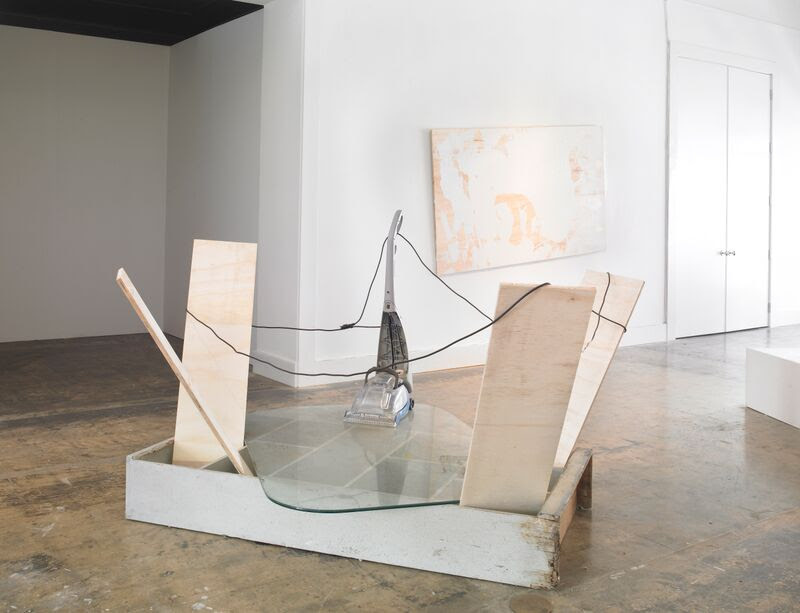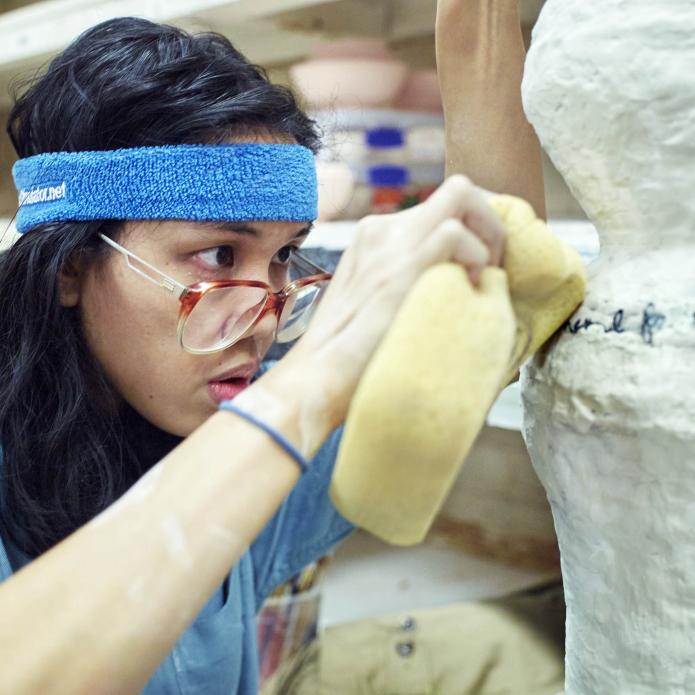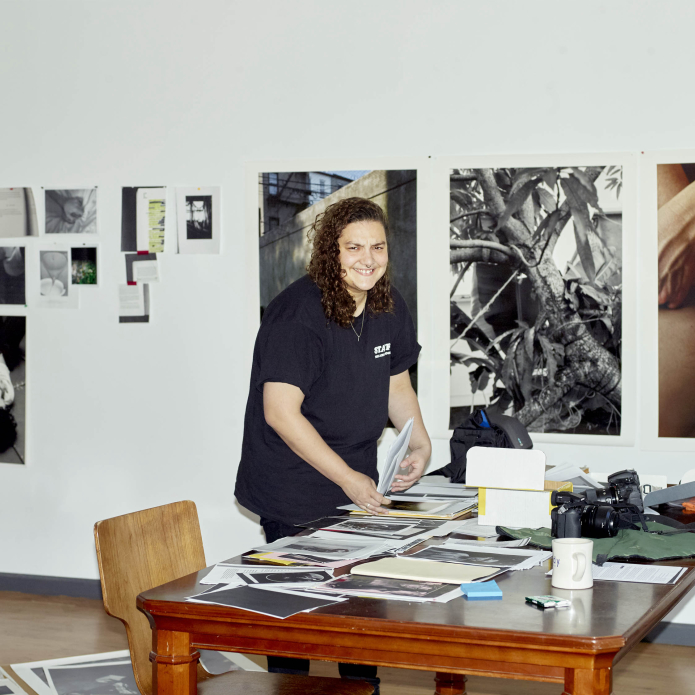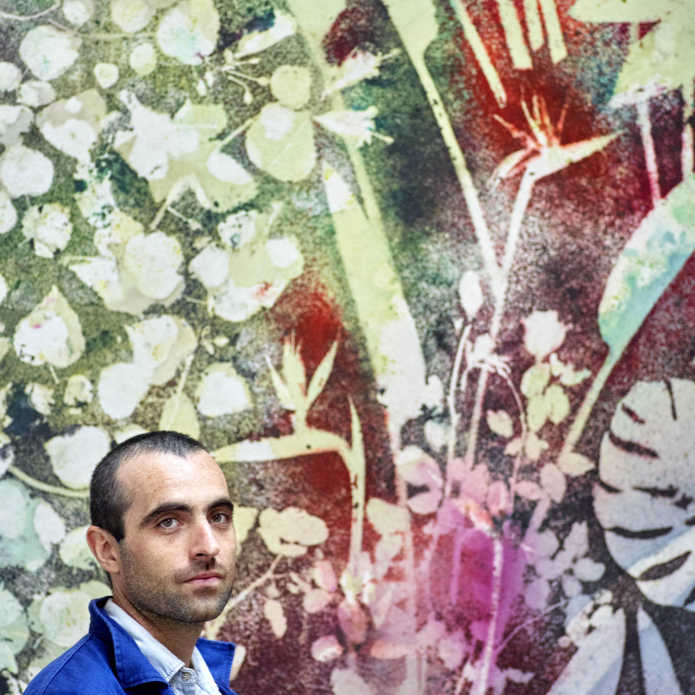
Ser Serpas’s assemblages are akin to music—personal and lyrical interventions into space that exceed articulation. “I treat every session in the studio like a music video. The install is more important to me than any piece individually. I hope that comes across. They’re fragments of my own narcissism, I guess. Like, I was dancing when I balanced this thing on this thing and listening to Radium, can’t you tell? I danced by myself in this gallery at 3 AM and drank.”

To dance with an object is to give it agency, to recognize its power to fill us with hope or dread, to project upon it our fears and wishes. And to find balance in that dance is to ask things to exist as they may not normally in the everyday world—to ask the outside world to reflect our inner harmony or turmoil.

A central part of this process is love, which is as critical and historical as any conceptual argument. Serpas says, “I’m 100% nostalgia. They’re just not my things—the stuff I’m nostalgic about—it’s like I’m watching a movie about whatever it is I should care about. I just watched Cold Mountain. It is great.” Our attachments are always shifting and unpredictable, and perhaps this is what Serpas hopes to call to mind. Something we desire becomes refuse and vice versa, or maybe we desire it because it is debased.




